
Peugeot 3008 Estate review
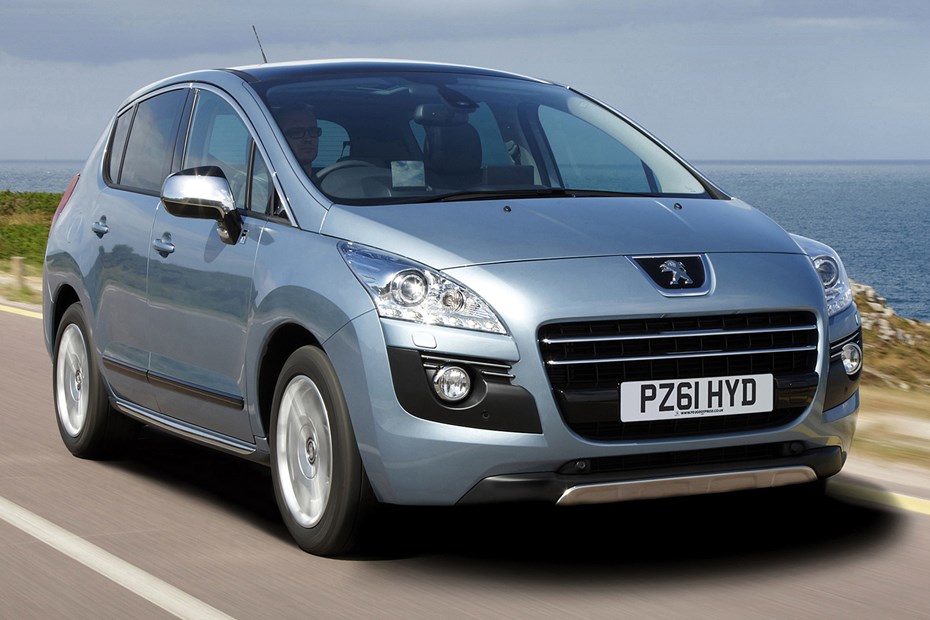
At a glance
| Price new | £17,030 - £29,950 |
|---|---|
| Used prices | £759 - £7,418 |
| Road tax cost | £0 - £335 |
| Insurance group | 14 - 31 |
Get an insurance quote with

|
|
| Fuel economy | Not tested to latest standards |
| Range | 475 - 1095 miles |
| View full specs for a specific version | |
Available fuel types
Petrol
Diesel
Hybrid
Pros & cons
- Refined and comfortable ride
- Plenty of room in the back
- Clever split tailgate
- Few ULEZ-compliant options
- Questionable reliability
- Limited rear visibility
Peugeot 3008 (09-16) rivals
Overview
When Peugeot introduced the 3008, it combined three existing popular family cars in one. With handling akin to a normal hatchback, a high driving position and chunky aesthetic like an off-roader, and the flexibility and interior space of the still-popular people carrier, it’s now an extremely useful and flexible used car for families.
Unlike the Nissan Qashqai it was designed to compete with, the Peugeot 3008 retained many MPV attributes, such as flexible seating and a high, van-like cargo space accessed via a two-part tailgate that can support 200kg on the drop-down lower half.
It also benefits from Peugeot’s chassis-tuning prowess, with rather nicer road manners than the Nissan and other early SUVs. Compared with more recent SUV-influenced family cars of this size, the 3008 has a comfortable, relaxed ride, and fits most difficult car parks and crowded streets without sacrificing too much in terms of safety or refinement.
Peugeot 3008 Mk1 used car buying guide
Choosing the best 3008 to buy used is relatively easy. At the budget end you can find examples for less than £2,500, and these will usually be 1.6-litre diesels that aren’t ULEZ compliant. Look for a cared-for example and it almost doesn’t matter which trim level it is – it’s a lot of useful car for not much money. Higher-power models feature Dynamic Roll Control, a hydraulic anti-roll bar that when it works improves handling – but on a used 3008 Mk1 it’s another thing to go wrong.
For the middle ground, around £5,000, you’ll find a good variety of models. There should be some of the November 2013 facelift models which not only look nicer, they have better build quality and features such as USB ports and Bluetooth hands-free with audio streaming. The 2.0-litre HDi diesel is by far the best all-rounder, if it has been well maintained. We’d lean towards older low mileage examples with good history in Allure, Exclusive or Sport trim, over a newer plate at this price.
ULEZ or clean-air zone compliant Euro 6 diesels were introduced in March 2015 (badged BlueHDi), at the same time as the 1.2 PureTech which replaced the 1.6-litre petrol options. These are generally at the upper end of the market, around £8,000. Your first port of call should be checking how much more you’d need to spend to get a 2016-on 3008 Mk2, particularly if financing your next used car.
There are many good reasons to buy the original 3008, but none that make it more desirable than the second generation.
Peugeot 3008 Mk1 automatic options
There are two types of automatic gearbox. The EGC models (generally 1.6-litre e-HDi, but the HYbrid4 also uses this technology) are an automated manual, the 2.0 HDi 163 and rare 1.6 THP 155 petrol feature a six-speed traditional automatic. These are easier to get along with, but in terms of reliability and maintenance both types of gearbox struggle to reach high mileages without problems.
Near the end of 2011 the 3008 HYbrid4 was released. This is the only all-wheel drive 3008, and one of the few diesel hybrid designs on the market. It performed well when new, but is a used buyer’s nightmare and despite low CO2 and electrification, is not ULEZ compliant – we’d steer clear at all costs.
If you’ve settled on a 3008 Mk1 as the perfect second hand family car for your needs, keep reading for 10 top tips for buying a good Peugeot 3008.
Peugeot 3008 Mk1 known faults and common problems
1. 1.2-litre PureTech – timing belt issues
On paper – and when new, with a warranty – the facelift 3008’s 1.2-litre PureTech petrol is the sweet spot for everyday use. However this clever three-cylinder turbo had a few teething troubles when first launched, notably the tendency for the teeth to crumble on the timing belt. This is a ‘wet’ design that runs in engine oil.
The belt should be changed at six years or 62,500 miles, but when launched owners were told 10 years or 100,000 miles. Many failed before that first interval. The problem is contamination from engine oil and unburned petrol causing the belt to absorb oil – and you can check the belt condition before purchase with a Timing Belt Checking Gauge which should cost less than £20.
If the belt is allowed to degrade fragments can block the oil system and the brake booster.
2. 1.6-litre petrol VTi and THP – ‘Prince’ engine
The 1.6-litre petrol was critically acclaimed when launched, and in good health it’s a smooth, refined and efficient engine. Unfortunately, the timing chain is a weak spot. Listen for rattles from cold when starting, general metallic sounds, as revs change, and feel for poor running and misfires.
Severe problems will cause an error code but may not light the check engine light – so a diagnostic code reader can be useful when inspecting a used Peugeot 3008. It’s also worth noting that if the variable valve lift system (valvetronic) isn’t working correctly the car might fail a traditional compression test when attempting to diagnose faults.
A trait of modern direct injection petrol engines is carbon build up. This is generally identified through poor economy and lumpy idle, and it can be cleaned with a process called ‘walnut blast de-coking’. It sounds like a joke, but it is a legitimate maintenance task if done correctly.
3. EGC gearbox – automated manual problems
First of all, the EGC gearbox is a manual gearbox – it’s the clutch and gear selection that is automated. Like the Sensodrive gearbox in previous generations of Peugeot, the EGC transmission is an efficient and easy-to-use solution for two-pedal driving, but it needs a unique driving technique for manoeuvres such as reversing uphill for a parking space. It also doesn’t like neglect.
When testing an EGC automatic 3008, judders, clonks, sudden and snappy clutch engagement, and high-revving, awkward shifts at speed are all signs of trouble. Hesitation away from junctions, awkward slow-speed manoeuvres and rather sluggish changes when first accelerating are just how it works.
The weakest links are battery condition, sensor and wiring, with clutch wear and clutch actuator the second most common cause of problems. Specialists will be able to maintain it well – general mechanics may struggle or cause more problems. The clutch could need replacement as early as 60-70,000 miles on cars driven in congested, hilly areas. It should not cost much more than a manual car’s clutch and dual-mass flywheel to replace – much less than a typical automatic gearbox rebuild, but still a lot of money.
4. 1.6-litre THP engines – go for a late one
Based on the same Prince engine as the 1.6 VTi, the turbocharged THP version is very pleasant when in good order, but inherits some of the same issues. In addition to timing chain tensioner failure and stretched timing chains, early examples of the 1.6 THP were prone to problems with the high pressure fuel pump (HPFP). Aside from stored trouble codes, misfires and poor running are the key things to watch out for.
5. 2.0 HDi – 150hp, 163hp diesel maintenance and history
The 2.0 HDi engine is prone to turbo failure due to infrequent oil changes and blocked filters, so look at the history for annual servicing and receipts listing what has been done. If there’s any sign of smoke at high revs, the turbo is likely to need replacement.
Look for a timing belt change between 75,000 and 100,000 miles ideally. Peugeot specified 10 years or 100,000 miles (up to 150,000 miles on some schedules) but if you’re spending a lot on a used car it’s not worth risking a belt near the end of its life. Tensioners and gaskets can fail, causing wear and damage to the belt from leaks.
Poor starting, lack of power and sudden power loss can indicate failure of the high pressure fuel pump. Also check for fumes and diesel smells near the injectors, and look at the oil on the dipstick for dilution caused by failed DPF regeneration.
6. Dynamic Roll Control – 1.6 THP and 2.0 HDi
Look underneath the rear of the car at the suspension. If there are signs of leaking from the pipes that connect the shock absorbers, then the Dynamic Roll Control suspension will need replacement. Although the problem is often simply a leaking pipe, the system is considered sealed and most garages will charge a substantial sum to replace it with the correct system.
Some will also try and charge a substantial sum to ‘convert’ it to standard, though such conversions are no more complex than swapping the shock absorbers for standard ones and should cost less than £500 from an independent specialist. With a couple of special tools it’s a job within the scope of most DIY mechanics.
7. Suspension clonks and rattles
Rear suspension bushes wear, and the shock absorber mounts don’t last a long time leading to rather harsh knocks from the back end. This affects all models including HYbrid4 versions – but if the hybrid model is clonking at the back, we’d just walk away from it. The cause could also be part of the motor drivetrain failing. Even if it isn’t, access to the shock absorbers is much harder and many independent garages just won’t touch it.
Front suspension is relatively straightforward Peugeot fare, which means anti-roll bar mounts can chatter and clonk on bumps, and worn/seized strut tops can cause bangs on full lock – ultimately putting the springs under stress, so check under the wheel arches for broken coils if you hear anything untoward or the ride height looks uneven or low.
8. Six-speed automatic gearbox – 1.6 THP and 2.0 HDi
The conventional automatic fitted to higher-end 3008s is part of the TF-8 SC series produced by Aisin, a firm that works closely with Toyota. If maintained well, these are much better than past Peugeot automatics, but they inherited their predecessors reputation. This means most garages will just treat a small issue as being typical, and some may find it a reason to charge an owner a lot of money for no good reason.
Inspect the pipes from the gearbox for the oil cooler – if a automatic 3008 has been used for towing, a conscientious owner might have fitted an external upgraded one. Dealers were told the gearbox was ‘sealed for life’, but if it is given fluid changes every 30-40,000 miles it will last a long time unless the car’s oil cooler/radiator or pipes degrade without being repaired.
On the test drive feel for slipping, slow responses, jerky shifts, or ‘flare’ where the engine revs climb and fall between the gearchanges under load. On cars with over 60,000 miles and no history of a fluid change this can suggest the gearbox internal filter is clogged – replacement is quite involved but should not entail a gearbox rebuild.
If the car has over 100,000 miles and is showing issues, and has no history of fluid changes or past work, it may need a rebuilt gearbox or major repairs due to the length of time it’s been driven with degraded oil or a blocked filter. It’s not worth the risk.
9. Diesel emissions – BlueHDi 120hp and 150hp, DPF on all models
Peugeot expected the DPF (diesel particulate filter) to be replaced when it’s full – anticipating a lifespan of 75,000 miles for the 1.6-litre. It’s rarely replaced on time, leading to emissions/depollution faults. Many owners opted to remove the DPF, which is an MOT failure. If you find a car that has a replacement DPF in the service history, that’s a very good sign.
To reduce particulates and aid DPF regeneration these engines have an Eolys tank which is supposed to be refilled by the dealer. Problems with this system are increasingly common, but used parts are readily available.
The only ULEZ compliant models are the BlueHDi versions. They use AdBlue and this system is prone to faults with the NOx sensor, tank and injector.
10. Electrics, and stop-start system
On 3008 models with stop-start the system relies on several sensors, including outside temperature and vehicle electrical load. Make sure the car is warmed up, and check that the engine stops and restarts at junctions or traffic lights. Check that the button works to disable the system as well.
Stop-start should be disabled automatically if the battery voltage falls, or if you have a heated rear window or heated seats on (or air conditioning fan running at full speed). Before diagnosing issues make sure the correct AGM battery is fitted, and coded to the vehicle’s ECU so it knows what capacity is installed.
Belt noises, squealing or chirping can suggest issues with the alternator, and if a vehicle has been driven in floods the capacitor that is used to boost the battery could be damaged. Eco mode warnings on the dashboard indicate the battery is not charging fully – and the combination of stop-start, a dying battery and the EGC gearbox is particularly unpleasant.
Wiring issues are relatively common – for example, the fan controller for ventilation may show signs of burned connections if it has failed and been repaired. It is important to check everything fitted is working.
What’s a used Peugeot 3008 Mk1 like to live with?
Over the next few pages, we’ll review each aspect of the Peugeot 3008 Mk1, taking into account its practicality, comfort, fuel economy and performance. If you’re short on time, you can also skip to our verdict page to see if we recommend buying a used 2009-2016 Peugeot 3008.



.jpg)
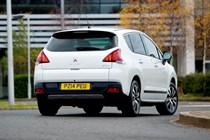
.jpg)
.jpg)
.jpg)
.jpg)
.jpg)
.jpg)
.jpg)
.jpg)
.jpg)
.jpg)
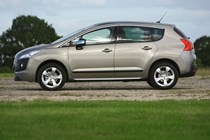

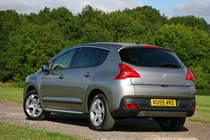

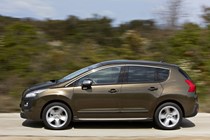

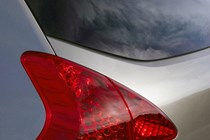
.jpg)
.jpg)
.jpg)
.jpg)
.jpg)
.jpg)
.jpg)
.jpg)
.jpg)
.jpg)

.jpg)
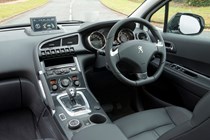
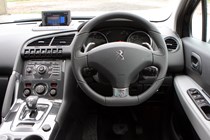
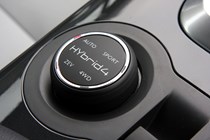
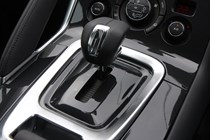
.jpg)
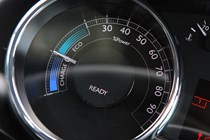
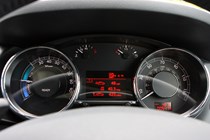
.jpg)
.jpg)
.jpg)
.jpg)
.jpg)
.jpg)
.jpg)
.jpg)
.jpg)
.jpg)
.jpg)
.jpg)
.jpg)
.jpg)
.jpg)
.jpg)
.jpg)
.jpg)


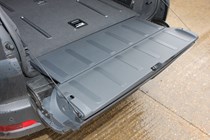
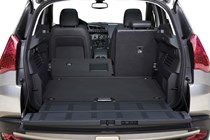
.jpg)
.jpg)
.jpg)
.jpg)
.jpg)
.jpg)
.jpg)
.jpg)
.jpg)
.jpg)




.jpg?quality=50)

.jpg?quality=50)
.jpg?quality=50)
.jpg?quality=50)
.jpg?quality=50)
.jpg?quality=50)
.jpg?quality=50)
.jpg?quality=50)
.jpg?quality=50)
.jpg?quality=50)
.jpg?quality=50)







.jpg?quality=50)
.jpg?quality=50)
.jpg?quality=50)
.jpg?quality=50)
.jpg?quality=50)
.jpg?quality=50)
.jpg?quality=50)
.jpg?quality=50)
.jpg?quality=50)
.jpg?quality=50)

.jpg?quality=50)




.jpg?quality=50)


.jpg?quality=50)
.jpg?quality=50)
.jpg?quality=50)
.jpg?quality=50)
.jpg?quality=50)
.jpg?quality=50)
.jpg?quality=50)
.jpg?quality=50)
.jpg?quality=50)
.jpg?quality=50)
.jpg?quality=50)
.jpg?quality=50)
.jpg?quality=50)
.jpg?quality=50)
.jpg?quality=50)
.jpg?quality=50)
.jpg?quality=50)
.jpg?quality=50)




.jpg?quality=50)
.jpg?quality=50)
.jpg?quality=50)
.jpg?quality=50)
.jpg?quality=50)
.jpg?quality=50)
.jpg?quality=50)
.jpg?quality=50)
.jpg?quality=50)
.jpg?quality=50)